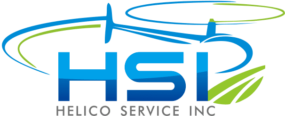
Siloed, hard-to-find data prevents learning from real-time and historical data. From advanced task management tools to simple, intuitive project planners, explore optio… Before making a decision, consider the unique needs of your business, scalability requirements, and how well each CRM integrates with your existing financial tools and workflows. Additionally, check for user reviews and ensure that the CRM aligns with your long-term business goals. Adam Hayes, Ph.D., CFA, is a financial writer with 15+ years Wall Street experience as a derivatives trader.
It automates processes from invoicing to collections, offering scalability for growing businesses. Its cloud-based architecture ensures accessibility and real-time data updates. It allows users to streamline invoicing, automate payment tracking, and manage customer interactions seamlessly. Its flexibility and scalability make it suitable for businesses at different stages of development. Keep your accounts receivable process simple, from invoicing to collections.
Remember that offering goods and services on credit is the same as how a bank lends credit to its customers. In accounts receivable management, it offers automation for invoice creation, payment tracking, and basic analytics. It’s an excellent fit for small to medium-sized businesses prioritizing a straightforward CRM solution. NetSuite is an end-to-end solution that excels in managing your accounts receivable.
Step 4: Collections Management

Relying on traditional, manual-entry applications can be detailed, time-consuming, and labor-intensive. Similarly, they are the basis for measuring the business’s ability to cash basis accounting vs accrual accounting convert sales into cash. When payments are not collected for accounts receivable, this is an indicator that the business is not performing as well as it should.
Company
- Payment terms should be spelled out explicitly to customers during the onboarding process, stating due dates, available early payment discounts, and any potential late fees or charges.
- For example, electronic invoice presentment and payment, or EIPP, is the electronic delivery of receipts and receipt of payment.
- Maintaining customer master data, and storing it in a centralized data-based system, is another example of how modern accounting can improve accounts receivable management.
- Some of the common drivers are late invoices, higher DSO, data discrepancies, inadequate credit checks, time consuming manual processes, etc.
Even straightforward tasks like cash application can be surprisingly intricate and time-consuming for those handling debt collection or invoice payments. Companies can’t fix what they can’t measure, which is why companies must evaluate their AR performance to accurately assess their accounts receivable management performance. The most prominent AR metrics are day sales outstanding (DSO), collection effectiveness index (CEI), accounts receivable turnover rate, and average days delinquent (ADD).
Automation features cover invoice creation, payment tracking, and analytics for better decision-making. Its intuitive design makes it particularly appealing to businesses seeking an easy-to-use CRM. Renowned for its flexibility, Salesforce offers a suite of tools for account receivable management. Its automation capabilities span invoice creation, payment tracking, wave integration and customer communication. Integration with financial tools enhances its functionality, making it suitable for businesses of various sizes.
Clear billing procedures are an essential component of effective accounts receivable management. Businesses can minimize payment delays with a checklist of billing processes. When it becomes clear that a receivable won’t be paid by the customer, it has to be written off as a bad debt expense or a one-time charge. Companies might also sell this outstanding debt to a third party debt collector for a fraction of the original amount—creating what accountants refer to to as accounts receivable discounted. Accounts receivable represents money that a business is owed by its clients, often what is the difference between operating and non in the form of unpaid invoices.
Understanding Accounts Receivable
Accounts receivable represent funds owed to a company and are booked as an asset. Accounts payable, on the other hand, represent funds that a company owes to others and are booked as liabilities. In this example, a client settles a $1,000 invoice, resulting in a decrease in accounts receivable and a corresponding increase in cash. When recording accounts receivable, you want to post the revenue in the month you earn it. This will keep your accounting records accurate and consistent with accrual accounting.
Extending credit to customers improves AR management
It simplifies accounts receivable management with efficient tools for invoice creation, payment tracking, and financial reporting, making it an ideal choice for businesses focused on financial clarity. Integrated with Microsoft’s suite of tools, Dynamics 365 offers a robust platform for automated accounts receivable processes. It facilitates efficient invoice creation, payment tracking, and provides insights into customer interactions, making it a comprehensive solution for businesses using Microsoft tools. Opt for invoicing software with built-in payment processing, enabling clients to click directly from their bill to initiate payments.
A low DSO means that your company takes fewer days to collect payments from customers. This is a vital indicator of operational efficiency and cash flow management. The receivables turnover ratio is the inverse of the receivables-to-sales ratio. In contrast, a higher number reveals a better success rate in collecting payments, which is a positive sign for the business. Many organizations still rely on manual invoicing, phone follow-ups, and archaic data systems. Meanwhile, companies that are digitizing and automating accounts receivable management tasks are leaving competitors in the dust as they leverage automation to boost cash flow and enable future growth.
